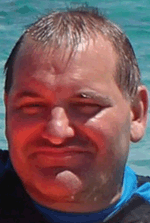Effects of near surface lithology on velocity modelling and time–depth relationships in the Cooper–Eromanga–Lake Eyre Basin
Anna Manka A C , Glen Buick B , Rob Menpes B , Luke Gardiner B , Cameron Jones B and Khalid Amrouch AA Australian School of Petroleum, University of Adelaide, Adelaide, SA 5005, Australia.
B Beach Energy Ltd (Adelaide), 25 Conyngham Street, Glenside, SA 5065, Australia.
C Corresponding author. Email: anna.manka@student.adelaide.edu.au
The APPEA Journal 58(1) 321-338 https://doi.org/10.1071/AJ17158
Submitted: 12 December 2017 Accepted: 13 February 2018 Published: 28 May 2018
Abstract
Structural closures on the western flank of the Patchawarra Trough in the Cooper–Eromanga Basin are truly low relief; drilling opportunities regularly target hydrocarbon columns of similar magnitude to the uncertainty of depth prediction. Improving the accuracy and precision of depth prediction will reduce risk for drilling opportunities, and improve drilling success rates.
A detailed study of the near surface geology (surface to ~500 m depth) of the western flank of the Patchawarra Trough has been undertaken to better understand the effect of observed geological variations of the near surface on depth prediction at deeper target levels.
The stratigraphic interval investigated includes the top of the Eromanga Basin and the entire Lake Eyre Basin, which is sparingly studied and routinely overlooked in the statics and velocity modelling process. This study analysed recently acquired cased-hole sonic logs in conjunction with gamma logs and mudlog data to map out the observed geological variations, and construct a 3D velocity model of the near surface.
Variations of layer thickness and seismic velocity were input into Monte Carlo simulations to investigate sensitivities of each formation on two-way travel time and depth prediction. This investigation has found that velocity variations of the Weathered Winton Formation, and thickness variations of the Namba Clastics have the greatest impact on imaging of structures at depth. Independently, these have the potential to completely conceal or create structures in the time domain.
Continued efforts in improved understanding of the near surface will subsequently lead to enhanced imaging of structures, which can then be used in the mapping of structural closures in petroleum exploration and development.
Keywords: Cooper–Eromanga Basin, depth errors, exploration, near surface geology, velocity modelling.

Anna Manka is completing her honours year in Petroleum Geology and Geophysics at the Australian School of Petroleum (University of Adelaide). She completed the summer vacation program at Santos Ltd in geophysics in 2016/2017 and is currently completing an internship at Beach Energy Ltd. Anna holds a Bachelor of Science and a Bachelor of Arts, with majors in geophysics, geology, Spanish and a minor in Modern Greek. This presentation covers a portion of her honours undergraduate thesis. |

Glen Buick graduated from the University of Adelaide with an honours degree in Geology in 2000. He is currently the manager of oil exploration at Beach Energy, after previous roles as a geologist with Saudi Aramco and Santos. Glen has a broad range of experience including successfully proving stratigraphic play types and commercial discoveries in the Arabian Basin, and field appraisal and development in the Cooper/Eromanga, Otway, and Carnarvon basins as well as the PNG fold belt. Glen is a member of PESA and AAPG. |

Rob Menpes began his career in the oil and gas industry 20 years ago chasing bypassed Jurassic oil columns in the Moomba area of the Cooper Basin. Over his career to date he has worked on most of Australia’s petroliferous basins both onshore and offshore, as well as internationally on the Gulf of Mexico, Kyrgyzstan, and offshore New Zealand. Returning to the Cooper–Eromanga basins when he joined Beach in 2012, Rob is currently involved in Beach’s exploration efforts exploring for oil on the Cooper Basin Western Flank. |

Luke Gardiner is a geophysicist for Beach Energy, based in South Australia. Luke joined Beach Energy in 2005, and has worked across various technical and operational teams through the Cooper and Eromanga Basins. He is currently a part of the Oil Exploration Team, focussed on the Western Flank. |

Cameron Jones graduated from Curtin University with a BSc (Geophysics) with honours in 2005, and then moved into the oil industry later that year. During his 12-year career, he has been involved in seismic acquisition, processing and interpretation, multi-client sales and seismic software support and development. His work has included projects in Indonesia, PNG, UK, Jamaica, Malaysia, Angola, Australia and New Zealand. Cameron joined Beach Energy in 2017 as a Technical Geophysicist and is involved in Beach Energy’s exploration and development efforts, exploring for oil on the Cooper Basin Western Flank. |

Khalid Amrouch is a structural geologist with expertise in geomechanics. He graduated from the University of Pierre and Marie Curie (Paris) with an MSc and a PhD in structural geology. His main interest relates to brittle tectonics, fracture characterisation and 4D stress analyses. Khalid started his career in 2005 at the Institut Français du Pétrole (IFP), which sponsored his studies, followed in 2010 by a position as research engineer at Mines PariTech. In 2012, Khalid spent a year working for BHP as an exploration geologist in Chile, before joining the Australian School of Petroleum in February 2013. Since then, Khalid has been an active member of the S3 Research Group, one of the largest geoscience research groups at the University of Adelaide. |
References
Alexander, E. M., and Hibburt, J. (1996). ‘Petroleum Geology of South Australia. Volume 2: Eromanga Basin’. (SA Department of Mines and Energy).Alexander, E. M., and Jensen-Schmidt, B. (1996). ‘Structural and Tectonic history’. In Petroleum Geology of South Australia. Volume 2: Eromanga Basin (SA Department of Mines and Energy).
Alley, N. F. (1998). Cainozoic stratigraphy, palaeoenvironments and geological evolution of the Lake Eyre Basin. Special issue on the Lake Eyre Basin. Palaeogeography, Palaeoclimatology, Palaeoecology 144, 239–263.
| Cainozoic stratigraphy, palaeoenvironments and geological evolution of the Lake Eyre Basin. Special issue on the Lake Eyre Basin.Crossref | GoogleScholarGoogle Scholar |
Alley, N. F., Clarke, D. A., Macphail, M., and Truswell, E. M. (1999). Sedimentary infillings and development of major Tertiary palaeodrainage systems of south-central Australia. In ‘Palaeoweathering, palaeosurfaces and related continental deposits’. International Association of Sedimentologists. Special Publication 27: 337–366.
Armstrong, T., McAteer, J., and Connolly, P. (2001). Removal of overburden velocity anomaly effects for depth conversion. Geophysical Prospecting 49, 79–99.
| Removal of overburden velocity anomaly effects for depth conversion.Crossref | GoogleScholarGoogle Scholar |
Bratvold, R., and Begg, S. (2010). ‘Making good decisions’. (Society of Petroleum Engineers: Texas, USA).
Callen, R. A., Alley, N. F., and Greenwood, D. R. (1995). Lake Eyre Basin. In ‘The geology of South Australia. Vol. 2, The Phanerozoic. South Australia. Geological Survey. (Eds Drexel, J.F. and Preiss, W.V) Bulletin, 54: 188–198.
Cotton, T. B., Scardigno, M. F., and Hibburt, J. E. (2006). The petroleum geology of South Australia. Vol. 2: Eromanga Basin. 2nd edn. Petroleum Geology of South Australia Series (Department of Primary Industries and Resources).
Drexel, J. F., Preiss, W. V., and Parker, A. J. (1993). The Geology of South Australia: The Phanerozoic, Vol. 2, Mines and Energy, South Australia, Geological Survey of South Australia.
Etris, E. L., Crabtree, N. J., Dewar, J., and Pickford, S. (2001). True depth conversion: More than a pretty picture. CSEG Recorder 26, 11–22.
Galton, F. (1879). The geometric mean, in vital and social statistics. Proceedings of the Royal Society of London 29, 365–367.
| The geometric mean, in vital and social statistics.Crossref | GoogleScholarGoogle Scholar |
Heath, R. (1989). Exploration in the Cooper basin. The APPEA Journal 29, 366–378.
Limpert, E., Stahel, W. A., and Abbt, M. (2001). Log-normal Distributions across the Sciences: Keys and Clues: On the charms of statistics, and how mechanical models resembling gambling machines offer a link to a handy way to characterize log-normal distributions, which can provide deeper insight into variability and probability—normal or log-normal: That is the question. AIBS Bulletin 51, 341–352.
McAlister, D. (1879). The law of the geometric mean. Proceedings of the Royal Society of London 29, 367–376.
| The law of the geometric mean.Crossref | GoogleScholarGoogle Scholar |
McQuillin, R., Bacon, M., and Barclay, W. (1984). An introduction to seismic interpretation: reflection seismics in petroleum exploration. (Graham & Trotman: London).
Metropolis, N., and Ulam, S. (1949). The Monte Carlo method. Journal of the American Statistical Association 44, 335–341.
| The Monte Carlo method.Crossref | GoogleScholarGoogle Scholar |
Moore, P. S., and Pitt, G. M. (1984). Cretaceous of the Eromanga Basin — implications for hydrocarbon exploration. APEA Journal 24, 358–376.
Sheriff, R. E., and Geldart, L. P. (1995). Exploration seismology. Cambridge University Press.
Wopfner, H., Callen, R., and Harris, W. K. (1974). The lower tertiary Eyre formation of the south-western Great Artesian Basin. Journal of the Geological Society of Australia 21, 17–51.
| The lower tertiary Eyre formation of the south-western Great Artesian Basin.Crossref | GoogleScholarGoogle Scholar |


